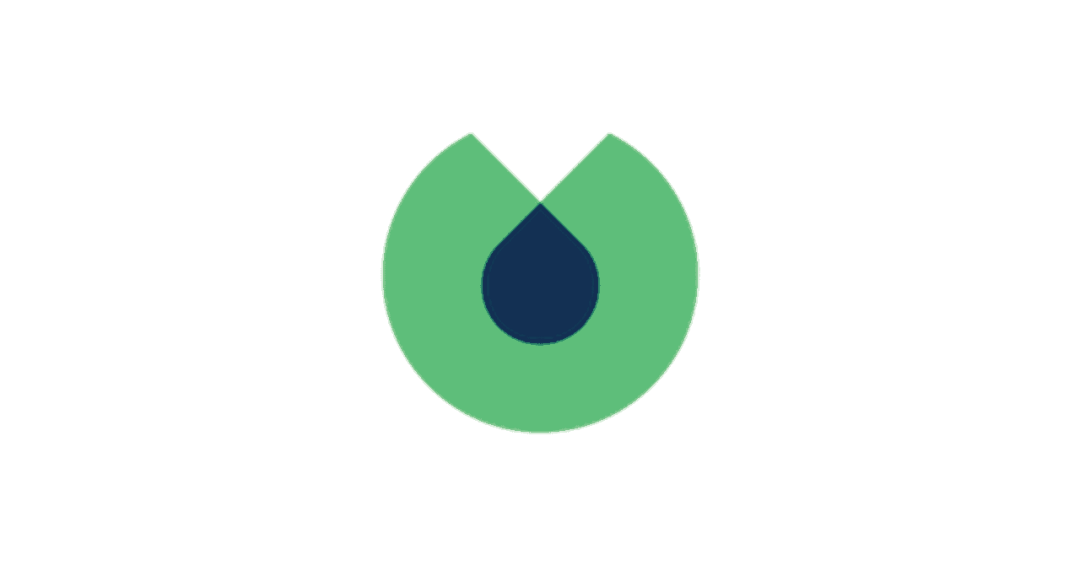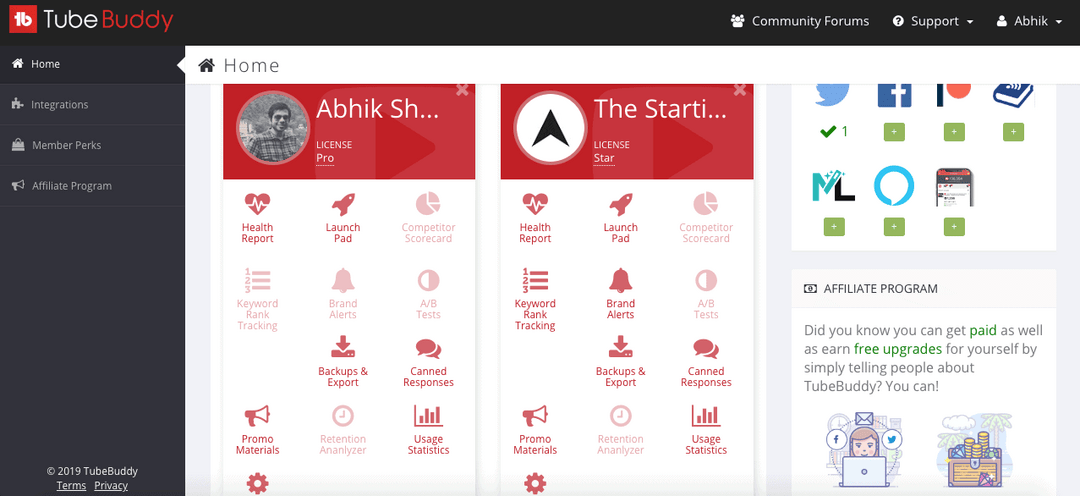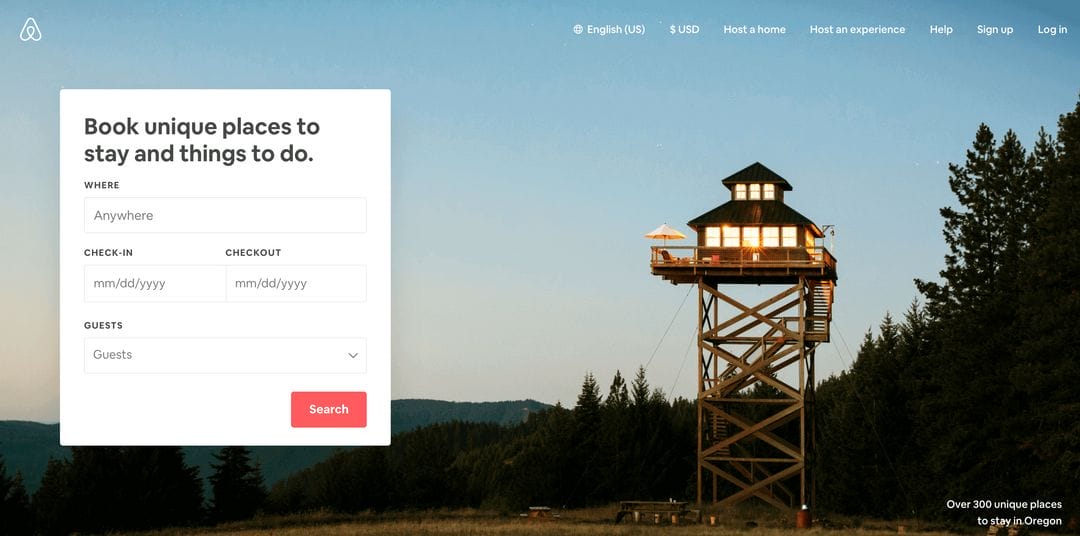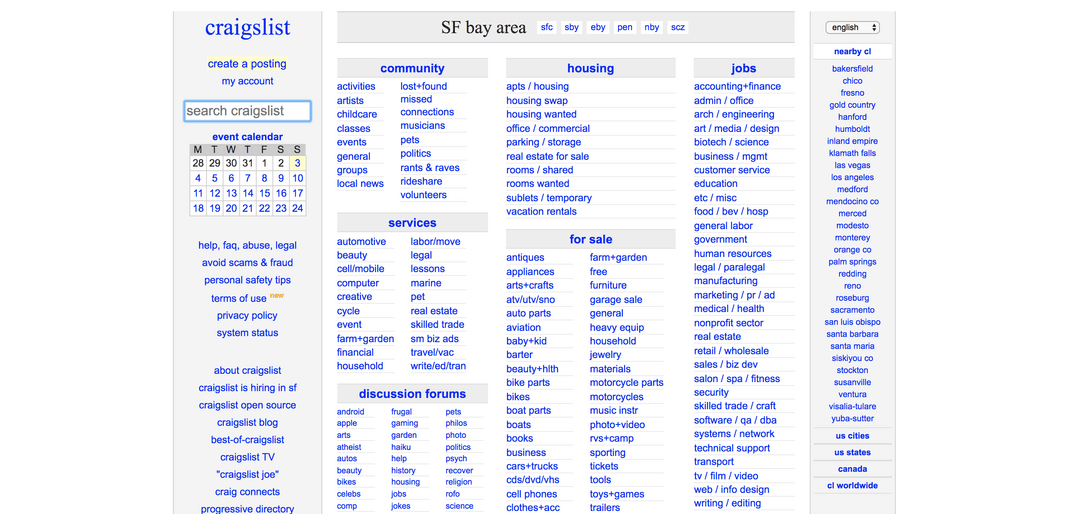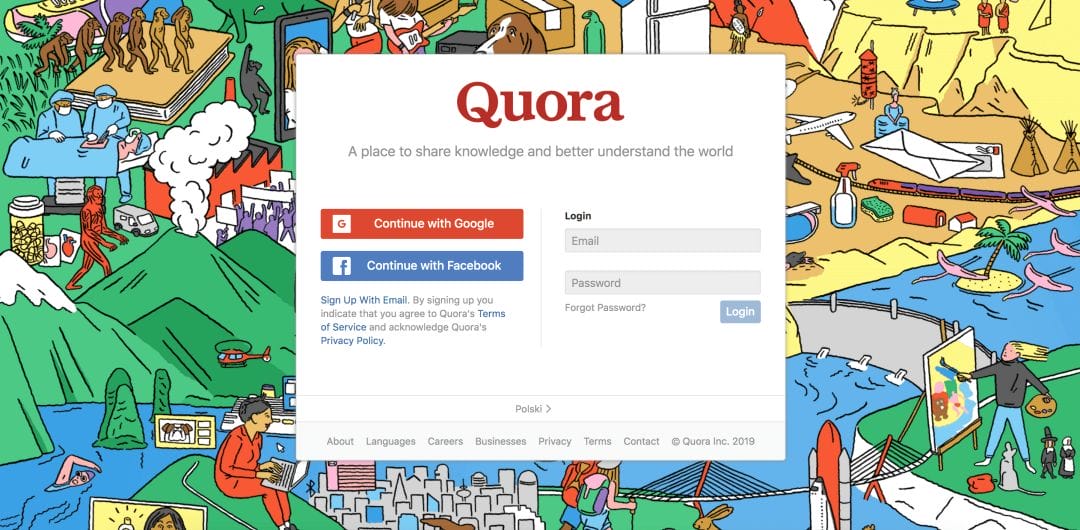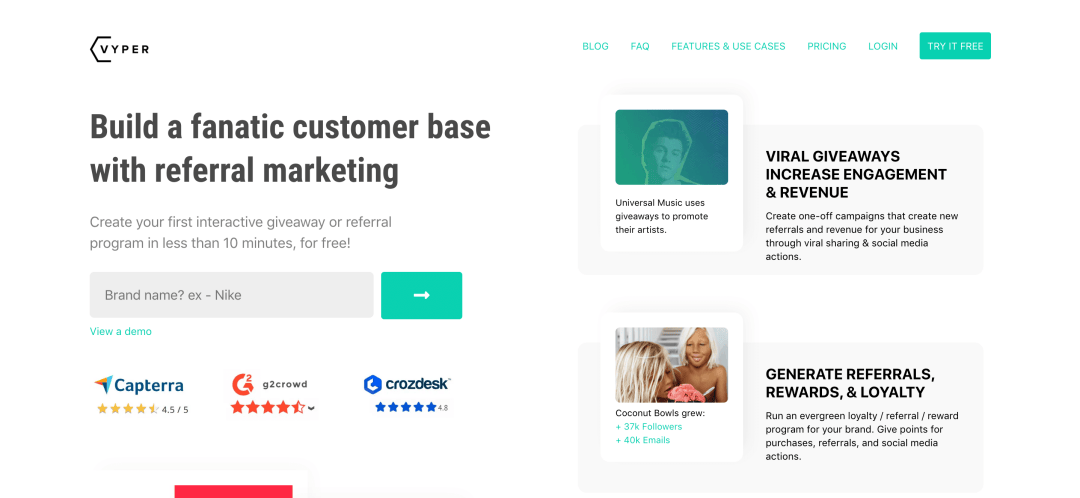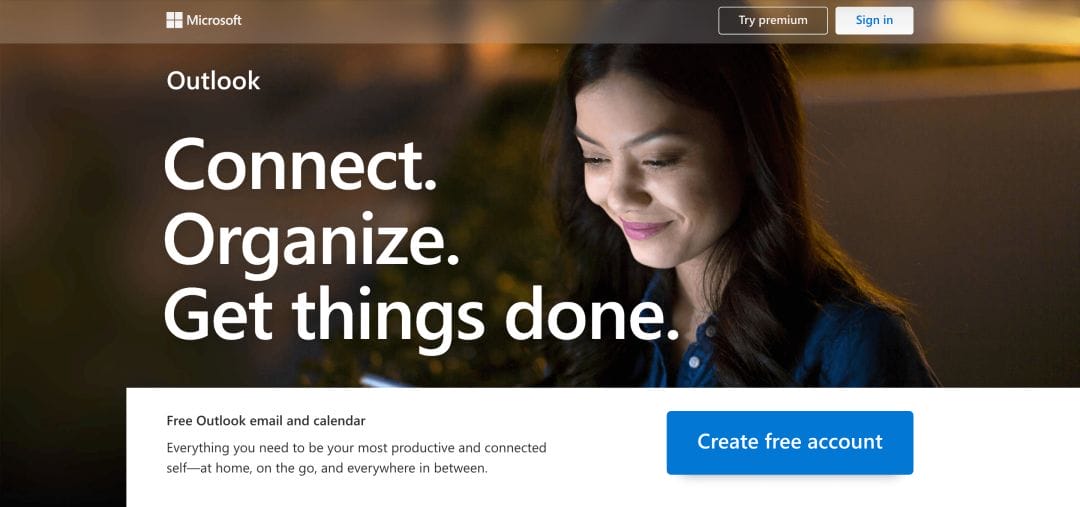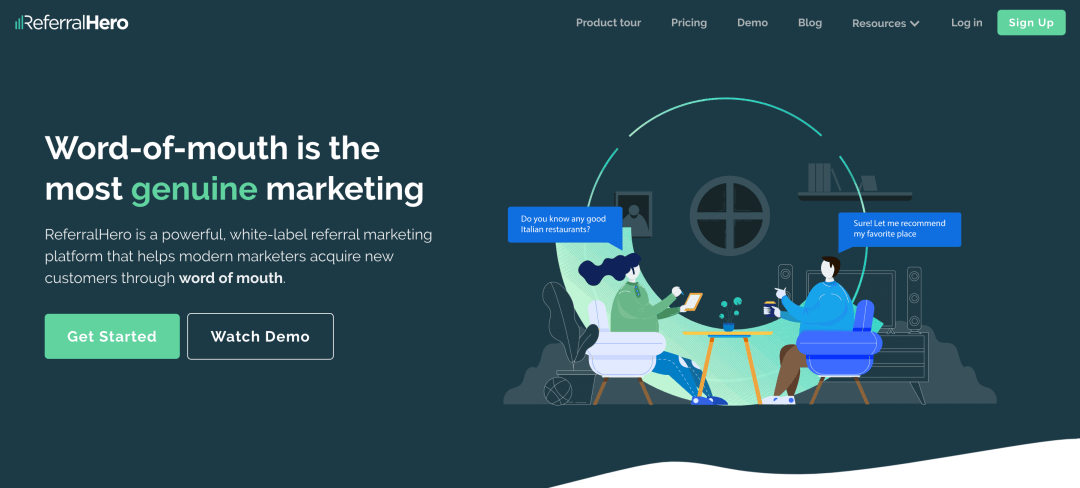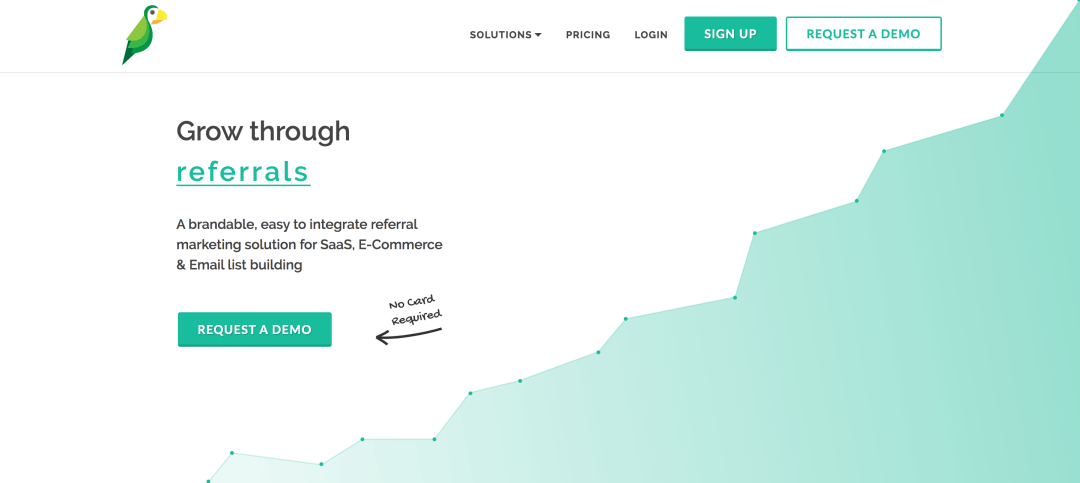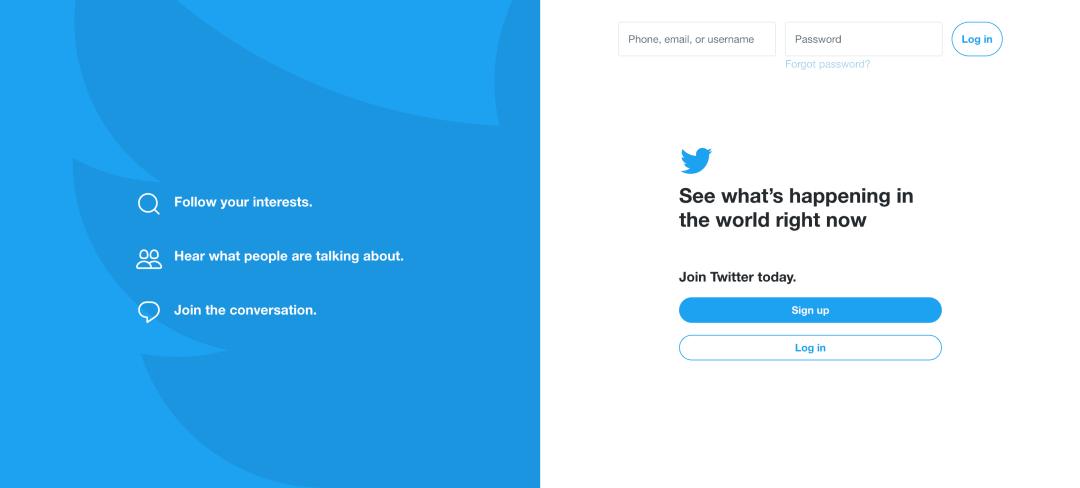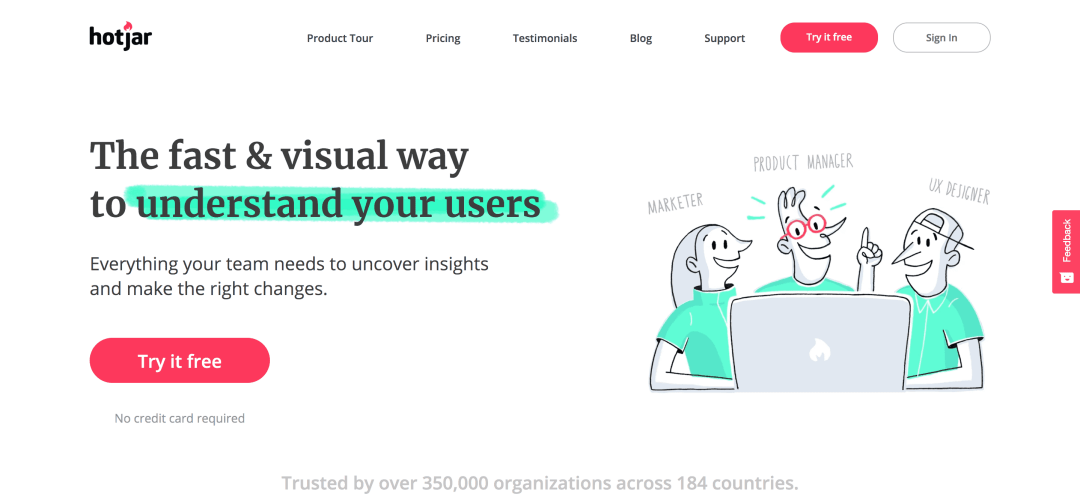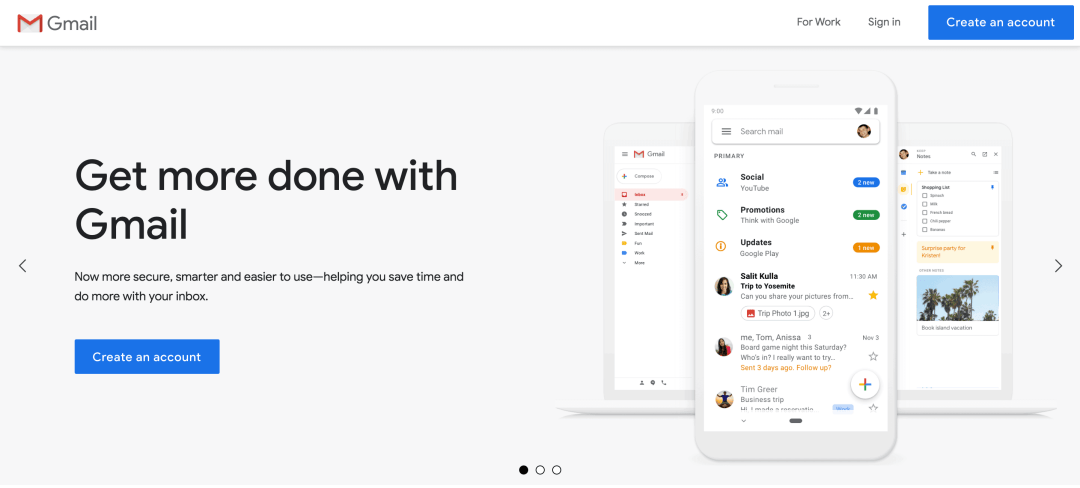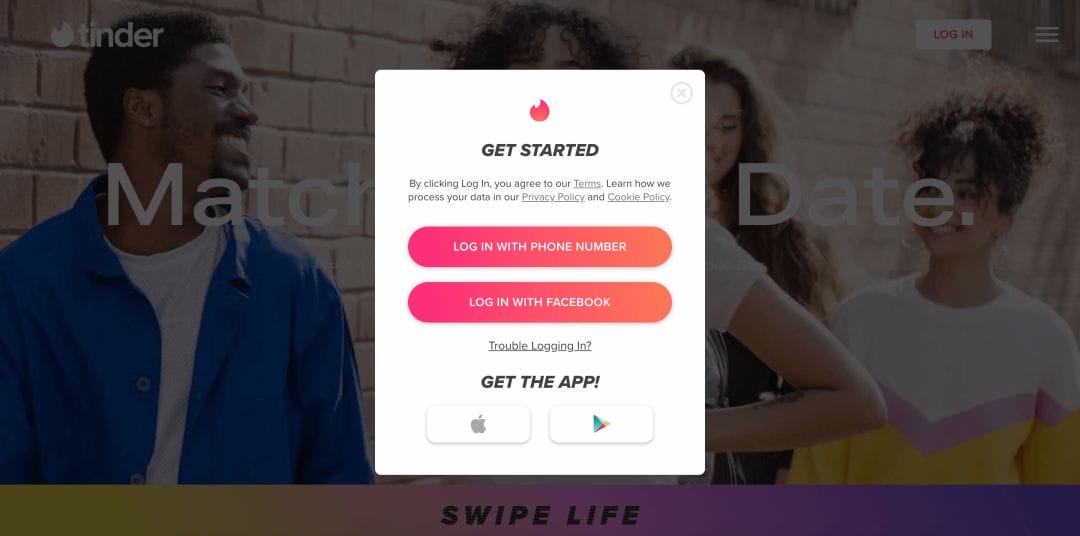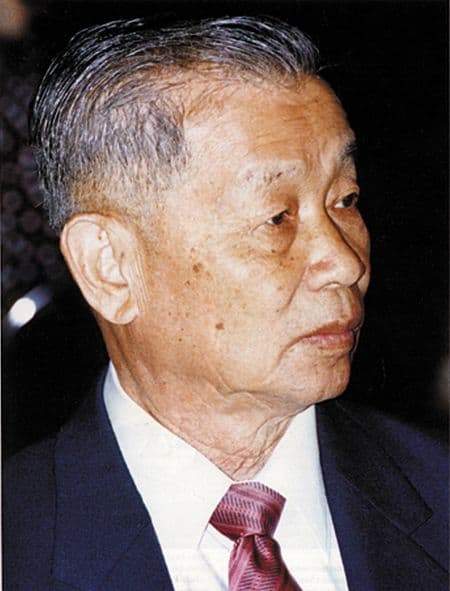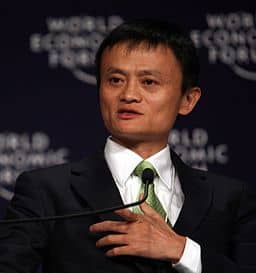
How Holger Seim Scaled Blinkist from 0 to 1 Million Users in 4 Years
How Holger Seim Scaled Blinkist from 0 to 1 Million Users in 4 Years
Founder and Editor-in-chief
The Starting Idea
From exchanging school book notes in High School to using that same idea to build a phenomenal 1 million users strong B2C SaaS company, Holger Seim has seen and done it all.
But what will strike you most about the cerebral founder of Blinkist is his willingness to share his vast ocean of knowledge with people who are just beginning (much like his blockbuster knowledge product), a quality amply highlighted with his belief of urging people to take the plunge and getting things done.
Sure so, he was kind enough to sit for a Skype chat with me, where we discussed all things under the Startup Sun, right from the now proverbial ‘How do I Start’ to Growth strategies, social media hacks, business model selection, backend processes, mindset tips to even his insights on dividing equity. He also explained in detail term which has now become synonymous with his Startup, the organisational concept of ‘Holacracy’.
After this interview, I felt I just excavated a goldmine of knowledge and so will you.
Abhik: What is Blinkist?
Holger: Blinkist is all about inspiring people to keep learning.
Nowadays it has become harder and harder to find the time to read a book or to listen to a podcast, to read along through an article, to take time and really dedicate it to learning.
We are distracted by social media, by news out there, we are busy with our lives.
We have acquired new reading habits. We read in a shorter amount of time on our digital devices or we listen to content.
A lot of learning content, for example, non-fiction books, has not really adapted to those new reading habits. Since we (at Blinkist) have faced this problem ourselves, we wanted to read more, to continue to learn after graduating from university as much as we learnt in the university, but didn’t find a way to do so.
Hence, based on having this evident problem at hand, we decided to fix it and Blinkist is what we came up with.
Blinkist offers key insights from non-fiction books which you can read or listen to in 15 minutes.
We at Blinkist take the gist of the nonfiction book and transform it into a format which we call ‘blinks’ as you can read it in the blink of an eye.
If you like them, you have much higher motivation to go on and read the full book.
Alternatively, if you don’t like them or you think it is interesting but not enough to commit 8 hours to, then you save time whilst getting some good food for thought coupled with inspiration.
That’s Blinkist in a nutshell.
Abhik: What are the processes which go behind creating these Blinks?
Holger: We try to stay true to the book, so we try to use examples which a book author himself has used in the book.
This is because the authors themselves are experts in what they write about.
We just want to give users an authentic insight into what the book is about.
Examples used in certain books are a part of this insight. What we do not take from the book, is the language. We use the Blinkist language.
Having said that, there are some books which do not have vivid examples, so we have to come up with our own as examples are indeed an important part of retention and understanding.
But overall, books are doing a great job with backing up their arguments with examples.
Abhik: What was Blinkist’s starting idea?
Holger: The problem that Blinkist solves, we were facing that problem ourselves. So initially we built Blinkist for ourselves.
We are lifelong learners but we found it harder and harder to keep learning and keep reading. So we started building a solution for this.
Our goal is NOT to replace books. We do not want our users to stop reading books and only read blinks. We could never replace the value of the whole book in 15-minute blinks.
But what we can do is make it easier for the reader to get started. We can lower the barrier to engage with book content and it can bring books or other learning content in front of an audience which is not used to reading books anymore.
The way we started was we had this problem, following which we analyzed how people read nowadays, we looked at other reading apps and what are people used to when they read on a mobile device and started to develop some formats.
We started to read books and think of ways or test ways on how we can distill the key insights, so they can be read on mobile devices.
We started to iterate. We took some books, wrote them in blinks of a different format. Simultaneously we also scribbled some app screens. Then after everything was prepared, we went to real users, to people who didn’t know us and asked them to go through this prototype.
We asked them – “Can you please read this PDF and tell us what do you think?”.
We used this feedback to fine-tune our product which led to release of our first app.
Once the app was out there we continued to reach and read users, continuing to test with them more. We reiterated on app features, on user experience and also on the format.
Abhik: Tell us about the initial MVP of your product?
Holger: Maybe I can tell you in hindsight what I think could have been the perfect MVP for us.
Perfect MVP for us would have been an email.
Signing up for MailChimp, creating a WordPress powered website, attracting people who are interested in this content, learning how to market to those people, learning if they are willing to pay for it, basically learning more about the format using the newsletter format.
Then once we got core user base and understood its dynamics, then it would have been the time to develop an app.
This only shows how you always learn in hindsight that you should have done things differently.
Now coming to our actual MVP, it was a basic app existing only in German language which gave users the opportunity to read books in blinks.
We didn’t have audio, in the beginning, it was only a reader.
It had a mode to discover books in blinks, but really basic, just one stream, we didn’t even have categories back then.
We had a library where you could add books and see your readings.
Having said that, the core of the Blinkist MVP is what you will still find in the newest version of the app, but now it is more sophisticated.
There is more content so we need to figure out ways to organize it in a better way, how to make it easier to discover.
Abhik: Why did you decide on the Freemium Business model? Any other business model you had in mind or plan to change to?
Holger: We tried various business models in the beginning, from single purchases per book-in- blink to a fully paid model without a free option.
In the end, our current subscription-based model with a free offer worked out best.
Abhik: Can you shed some light on the Logo design and its meaning?
Holger: The dark blue center of our logo symbolizes a drop, which stands for the essence that is delivered by our content.
The green shape around the drop is a metaphor for our team and everything we’re doing, forming a filter that distills the signal from the noise around us.
Abhik: Does Blinkist need a buy-in from book authors?
Holger: It is important to point out that we do not need a buy-in from book authors.
We are not infringing copyright. We read books and then we come up with our own reviews.
It is our own language and even if we used copyright protected materials we would not need a buy-in from book authors but a buy-in from the publishers.
That’s because most authors, 95% of them skip their rights to the publishers, so we would have to talk to publishers, not to the authors.
We are still approaching publishers. We have partnership agreements with some publishers who would allow us to use original book cover, because they are protected by copyright law.
Apart from that, we have publishers who would also allow us to use original quotes and make us their partner while others are waiting a little bit longer to see how much Blinkist can grow.
Not all the books we have on Blinkist are covered by a partnership with publishers but we are open to the industry.
Abhik: Does Blinkist face any reservations from book authors and publishers regarding the revealing nature of the blinks which gives out a lot of core content of the original book?
Holger: If someone says that we are able to give out all the book content in 5 pages when the book has 300 of them, then this shows what this person thinks of the book.
There are authors and publishers who are skeptical or afraid that after reading a book in blinks, users would not be interested in buying and reading the whole book anymore.
I always tell them that if you think that a 5-page product can compete or replace a 300-page product, then you certainly do not believe in your product and you better start innovating on it by starting to write a better book if it is really what you believe.
We do not believe so. We think books have a lot to offer which a few Blinks can never match.
For us, it is not about replacing books. A Book offers differentiating viewpoints which balance arguments and counter arguments in a better way.
Their readers can dive deeper into examples, case studies and they have repetitions which are better for retention.
What Blinkist does, is that it gives a good overview which includes key insights, but not in such a depth that it will stop people from reading books altogether.
It would rather give people a good idea what the book is all about, give them some food for thought and so on. Because let’s face it, there are people who will never read a book about politics if they are not interested in politics enough.
But maybe they are interested enough to try out and read a 15 minute version of a book to get some thought, some inspiration, some new perspectives which might create a new drive and an interest.
So this is what we do. We make it easier for people who are interested enough to dig deeper.
We make this process easier and make reading more targeted. Coz if you start reading without knowing what you want to get out of it, you read less consciously and you retain less.
If for example you read a book called Getting things done [by David Allen] you already know that you really want to learn more to make your system useful, to be more productive in your day to day activities.
You want to learn about a proper system, how to organize your inbox with “getting things done”.
So you will read it much more consciously, so there you go. It adds another value. It is about the conscious discovery of books and about reading more efficiently.
Abhik: What were the hurdles Blinkist had to face in its initial stage?
Holger: Hurdles which we had in the beginning and which we still have is something which comes inherit to every company:
- To stay focused on the right things.
- To not to do everything at once.
- To always be aware of what are the most important goals and milestones to reach as a company so to make it to the next level, whatever this next level is. And then really focus on them.
- Learn to say no to other things.
- Learn to say no to opportunities which come in your way or other ideas you may have. Especially when you are a really small team, in the beginning, there is only so much we can do. You need to take some time to think what is really important and what should I focus on and dare to say no to everything else. This is still relevant, it is one of the key challenges, key levers to grow business sufficiently.
Apart from that, the whole team was consisting of first-time founders.
None of the team members ever developed an app, been a product manager, or a digital marketer. Nothing.
When we started, we started from scratch. We had to read on how things should have been done, for example, how to manage products, how to grow a business through head acquisition, how to do PR.
Just to learn everything from scratch was itself a challenge. We had to learn and iterate fast because you are always working against time.
You have funding which lasts a certain amount of months or years and when it is gone you have to be ready for the next round of funding.
You need to find an investor who is willing to invest and fund you and they will be willing to fund you only if metrics are good if they see you are growing.
Better learn fast which of those metrics are relevant and how to make them go up, basically.
Abhik: When did the Founders decide to look for investors?
Holger: Pretty early on. We are a team of four founders but we knew that in order to really develop a meaningful product, we can’t do it all on our own.
We had an app developer, we needed support in writing the content and also eventually support in marketing it.
As I stated earlier, we could have done an email newsletter product, which could have been done only with the four of us for first 6 months but since we didn’t have this idea back then, we decided to get an app developer and an additional person for contact creation on board.
Due to this, we needed funding early on. We also needed base salary ourselves to survive.
But we said there is always this factor about the window of opportunity.
The app ecosystem was still young back then and we thought if we don’t do it right now and grow it aggressively then others may have the idea and do it.
We decided that venture capital will help us to grow this faster, more aggressively, be the market leader before others have the idea to copy it or do it on their own without knowing us.
It is also something we see right now. This hypothesis has been validated. We have been quite successful, we have grown over the past couple of years and others started to notice us.
We see companies copying us right now which is fine and a proof of a thriving market.
So far the competitors we have seen are too much of straight copycats.
We like competition, it is what gets us going but we would like to see more innovation, more added value rather than just copying.
It is nothing which scares us, on the contrary, it motivates us. We are sportsmen and women and we take it as a challenge.
Competition makes us going and makes us ambitious which is good.
Abhik: Give us details about the user onboarding strategy used by Blinkist?
Holger: We’re constantly experimenting with onboarding strategies, so there is not the one strategy that I can give you details about.
We currently focus on providing users with one free book after they signed up because we found that less choice makes it easier to get started and try the product.
But as I said, we’re constantly testing, so this may be updated soon.
Abhik: What growth hacking methods did Blinkist apply initially to grow subscribers?
Holger: There was not one growth hack but a lot of small things.
At the beginning, we focused on a lot of PR, because it is more of an aggressive approach.
We wrote stories on our own, pitched them to journalists, trying to make them see why is it relevant to write about us.
We also had contacts in the ecosystem which we tried to leverage to get early adopters base.
Next, for having good marketing, we started to implement reliable tracking. What I mean by this is an attribution on mobile and web so that when someone clicks on a certain link or a campaign and then comes to the app store through that link, lands on your website and signs up to your email marketing, you can actually see and ascertain from where this person came from and learn which of your marketing activities attributed valuable users and which did not.
This technology was something new back then and before this, it was all foggy and blurry for us.
After implementing this, we started to see what actually drove users.
Apart from this, there are also your classic social media channels: Facebook, Instagram, Adwords, paid content, etc.
In general content marketing is important for us as we are quintessentially a content company. We are also blessed with a good word of mouth ratio.
When people read things on Blinkist, it is quite natural for them to share it with their friends and colleagues.
You see, when you learn something which sticks with you, which resonates with you, there is a high probability you will talk about it at some point in time.
In your job or at home you will say: “Hey! I’ve read this, it is a really cool piece of advice”, and a lot of times people will be curious where this person read it.
To be honest, whenever we invested money in paid acquisition, we saw these acquired users brought more users along with them through word of mouth.
Abhik: You mention the use of Social Media for Growth Hacking. Can you share some of the social media tips which gave you great results?
Holger: The creative is one of the most important factors, so you need to find the right one.
The creative consists of image or video and the message that comes along with it.
You need to find the right message with the right image or video which resonates with your users or brings the right users.
It is easy to launch a clickable ad. If you post a sexy image then you will get a lot of people’s attention and they will click.
But after this, they will not install your app because they clicked on the image not for the value or for the message.
You should test it, find the right messaging and image to attract the right users, to set them in the right mood so they are willing to test your product and are willing to subscribe in the end.
Targeting is obviously important. Facebook allows you to target really to the nitty gritty of a said target group. You can choose age, gender, nationality, interests, etc.
The most important thing is to test. Test hypothesis, different targets and find out which targeting and combination to use.
Even if you find something which works, unfortunately, you have to change it frequently as people get bored very fast, get blind on ads very soon, and then they do not react to them anymore.
You need to change it frequently to keep people interested.
Abhik: How does the backend work process look like at Blinkist?
Holger: We have people who screen the book market every week.
They see how certain books are reviewed on certain sites, are they recommended by journalists, by experts, are they part of listicles and articles.
Then we see what are our user requests. We have user’s wishlist features. Users can request books too. We get a lot of release notes from publishers with blurbs.
Based on all this data while having in mind what our users usually like, we curate a list of books we want to publish.
We have a big pool of freelancers who are experts in their respective fields. We check who is available to distill the key insights to write blinks in the end.
On our end, we do quality management. We read books along.
We have 12 people who skim books alongside in pairs to make sure we look at the book with two pairs of eyes at least.
After editing, blinks are ready in their text format.
Then we pass it on to the Audio group which records them in the said audio format.
For this, we have an audio producer and a couple of narrators.
The last step is publishing the book so our users can enjoy them.
Abhik: How much time does it take to create blinks?
Holger: It depends on how fast we want to have them.
If we need the blinks very fast, we ask our readers to speed up the process, or we pick a reader who has time and can read it very fast.
We can move from decision to publishing within one working week.
Sometimes when we have more time, we can work around the schedule.
Since our freelancers are experts in their respective fields, they also have other jobs.
We find it quite important to have people who also practice their knowledge. It enriches them with different perspectives and adds quality to their work.
As a consequence, we need to work around their schedules. Sometimes they need two weeks to read a book or even three, to find time to read it.
But usually, we do not need blinks so urgent.
Abhik: Being a highly successful international Startup founder, what do you think worked in your favour?
Holger: One thing which still works in our favor is a trend.
We are lucky enough to have put our bets on right trends. We see that people are more and more overwhelmed by information overload.
We are trying to solve this.
People are more willing to pay for mobile subscription services.
It is normal to have music or video subscriptions which also works in our favor.
We see that informal mobile learning apps are gaining more attention, attracting wider audiences.
With services like Babbel, Mindfulness, Headspace or brain training, people are turning more and more towards apps and mobile experiences to learn and grow professionally.
Last but not the least, there is an increase in audio adoption with the boom of podcasts.
People on the go are listening to content more than music. All these trends are working in our favour.
What we learnt early on is to always be aware of what we should be focused on, what are our core metrics which we need to look at and what keeps us focused on the right things.
Since our engine of growth is paid acquisition, we learnt that we need to focus on customer acquisition cost and work on things which will make customer acquisition cost be kept at a sustainable level or improve them to scale further.
The awareness about what to focus on helped us a lot.
Abhik: What are some of the big mistakes Blinkist made?
Holger: I think we launched too complex a product at the very beginning.
It could have been made much easier and much faster, using lesser resources.
We also did too much at the beginning. I guess we needed to learn the hard way to focus.
We wanted to tackle too much and at the end, tackled nothing at all.
I would also say, when during the first 9 months when we were in beta and did Blinkist only in German language and targeted only German market, it would have been better to launch in English right away and use this time to get more feedback from a bigger early adopter audience.
But when looking back, I never think that we could have done this differently.
Everything is part of a journey. You need to make mistakes to learn from them and build up experiences.
On a more experienced level, we would have probably talked to people in early days and would have tried to learn from them prior to making mistakes. You know we still make them.
Sometimes a person finds right words at the right moment and then you act upon the advice and sometimes you do not act upon it.
You think business is different or you were just not very perceptive at it. But it is OK.
As I said, It is part of the journey. Sometimes it is also good to not to listen to advice because, in the end, you know your business best.
I think one thing which is good to learn is to differentiate good advice from bad ones.
Not to do everything others tell you to do but also still listen to others and try to pick things which are relevant to you.
Finally, one needs to try to avoid those mistakes.
Abhik: Whenever we read about Blinkist in the press, the concept of ‘Holacracy’ comes along with it. What exactly is Holacracy?
Holger: Holacracy, in general, is an operating system for an organization which puts a lot of emphasis on self-organization and tries to remove managers.
When we started Blinkist, we started with a classical hierarchy structure that we learnt from companies we used to work for.
But then at some point, we saw the shortcomings of such organizations. Workers were less motivated, then us founders would always be a bottleneck because we would always need to take all the decisions and sometimes we were not experienced enough or we did not have the right information to make the smartest decisions.
We also faced politics coming our way.
We weren’t happy with this classic organization anymore and we did some research on what else is out there.
How could we not only build innovative products but also be an innovative organization for which people want to work for?
The result of this search was that we found Holacracy and we were very excited about it.
The promise of management free organization, which works much more sufficiently, makes people engage with employees in a deeper way, we bought into it.
We took some things which we liked and which we believed could solve problems that we faced.
What we implemented was an organization explicitly structured in circles where each circle has roles again. Each role can be energized by a person. As one person I have one or more roles and these roles are explicitly described somewhere.
The advantage of this is that there are no implicit expectations and also this provides a lot of clarity regarding everyone’s role in the organization.
With the implementation of this system, as a person I know this is what I am accountable for, this is my domain and I am allowed to make my own decisions within the purview of this domain.
While defining respective roles and circles, this has also helped to empower people to make their own decisions because they now have more clarity about what they are responsible for.
We also have a person who coordinates the various circles, someone, who is more experienced and helps people by coaching them.
Also, it is not a team leader who takes all the decisions but decision making is centralized among roles.
The main thing for us is to empower people to take their own decisions and to let them organize themselves.
The second thing we took from Holacracy was its meeting structure.
Each circle has a tactical meeting every week which has a clear, structured agenda which makes sure that we meet everyone every week and all the relevant information flows for the purpose of achieving transparency.
For taking the right decisions you need to have full information, be able to see the bigger picture.
These tactical meetings ensure the receiving of right information from everyone and put pressure on circle leaders shoulders and put it on the organization by having certain routines, so you do not need to have them in your head all the time.
Each Circle has its own tactical every week, then super circles have them too which helps to create transparency for everyone.
These two concepts are the most important and had the greatest impact on us.
We also recently wrote an article about it in our magazine where we stepped a little bit away from Holacracy.
We realized that when saying that we work by Holacracy and our company is inspired by it, our employees and people from outside were getting a different interpretation of this system.
When different interpretations exist, it is hard to follow the consistent approach.
So we decided to call it Blinkist’s operating system.
We wrote down the core guiding principles and around it the processes and guidelines which would cover things we find important for implementation of this system.
This created much more clarity among people.
The core values allow employees to make their own right decisions and make them feel confident that they can make such decisions freely because it is line with our values.
Abhik: What are some tips you can share on starting a Startup?
Holger: The first step is to take the plunge and just get started.
If there are people who have an idea and they are not sure whether they should do it or not, I think a lot of times it is easier than you think.
Sometimes just be confident and get started.
If you have a good team, a good idea, you believe in it, then make it happen. It is a lot easier than you think.
As a complex problem, it is challenging. It takes a long time but it consists of a lot of steps which you can easily take.
In that matter, how do you eat an elephant?
Step by step, piece by piece and that’s how you build a startup. The overall elephant seems to be very big and hard to eat but if you eat it piece by piece, it gets manageable.
Just get started and break down challenges to small manageable chunks would be one tip.
Then to focus and make sure you always know which piece to take on next.
Get advice from experienced entrepreneurs and look more for them than for investors or corporates.
Because investors will also give you advice and some of them are good, no doubt. But if those investors have not built a company before, then you will not get a lot of practical advice.
Sometimes they can help you on a strategic level but what you really need are more pragmatic ones which you can get from experienced entrepreneurs.
Dare to reach out to people via LinkedIn.
A lot of times people are nice enough to take 30 minutes to answer some questions.
Then learn to filter those pieces of advice.
Learn what is applicable for your business and what is not.
Abhik: Here is a burning question that a lot of Startup founders are faced with. How to divide equity?
Holger: This is hard to generalize.
It depends on specific situations.
Does everyone in a founding team have the same experience, do they invest the same amount of time, money, etc.
There are occasions where you have one experienced founder and more junior people, so in this case, it would be fair to give more equity to the experienced one.
There might be a situation where despite bringing intellectual acumen one also invests in a company while others don’t.
This can again become a factor to balance the division of equity.
There might be a situation where people join the company while the other founders already have worked on it.
So it is really hard to say.
What is important is to have an honest discussion about it with all the founders and find a way to please everyone and make it fair.
If you notice that from the beginning there is someone who feels that they have been treated unfairly, then this little seed of unhappiness will grow into a big conflict at some point.
Try not to start building your company with a conflict.
Talk about it with everyone, find a fair split, look each other in the eye, shake hands and go together.
Never revisit it and be happy with it.
Abhik: What are your favorite Blinkist books?
Holger: I love Mindset by Carol Dweck as it opens up a whole new perspective.
A lot of times people feel like they don’t have the talent and that’s why they did not achieve what they wanted to.
This book calls this thought a static mindset where you believe more in talent than in practice and growth.
On the contrary, the growth mindset teaches you to approach this problem differently.
It says you can be good at everything If you have had enough practice in your life.
So overall this book really helps you in understating these concepts and being reflective because in some situations you will have static mindset and in other ones, you will have a growth mindset.
What is important and helpful is to notice that when you approach a problem with a static mindset and then try to turn it into a growth one.
It can really move mountains. It motivates you to go through this problem or challenge head on.
I also love the book Losing my Virginity by Richard Branson.
It is really inspiring and tells an amazing story, both the blinks and the book.
Right now I keep my focus on books for entrepreneurs, for example, Ben Horowitz’s The Hard Thing About Hard Things.
This book is totally worth reading as a whole but also at the same time it is a book written in blinks.
It is actually a mix of blog articles, so you can read any chapter in about 15 minutes at most and rewind chapters everyday.
The book is full of practical advice with many stories which are very inspiring and interesting.
These are the three books I would recommend.
Abhik: What lies in the future of Blinkist?
Holger: Growth.
A lot of growth.
Our ambition for Blinkist is to become the leading destination for lifelong learners.
We want to be the brand people turn to when they want to learn something new but don’t know where to start with.
We want to be the entry point.
In order to get there, we need to continue to grow our brand, make it renowned, make more people use the app.
A lot of marketing challenges await us as we keep innovating our product.
Like I already said, our competitors are coming up, user behavior is changing, so we need to keep the product at the edge of what we can do.
We have a lot of ideas too, there are beta features, so stay tuned.
A lot of exciting things coming up soon.
Abhik: What is the life mantra you go by?
Holger: When it comes to professional life, the mantra I go by is Richard Branson’s:
“Screw it, let’s do it”
Just be pragmatic, don’t overthink.
Think about things but don’t overthink them.
Trust your gut feeling, take some calculated risks, just do things.
Be pragmatic.
Rather fail now and then learn from it than not do anything at all.
You think about it too much and then end up doing it too late.
In my personal life, there is an insight from The 7 habits of highly effective people.
Make time to sharpen the saw.
You won’t be a successful entrepreneur or happy person if you work seven days a week and only focus on your work because there is so much more in your life.
Try to balance it and try to focus on friends, family, leisure time, stuff which makes you happy beyond work, whether it is sports, music, etc., but make time for it.
Building a company is not a sprint.
It is a marathon and you need stamina for it.
Sharpen your saw, get some time off now or then and focus on work life balance.
Especially in early days, it is stressful.
It is not a 4 hour work week but having said that, do not make it a 72 hour work week over a long period of time, because chances are you will still not have a sustainable business.
It usually takes 7 years till a business becomes successful, till the exit, where you can successfully retreat.
So take a step back and have other people take some of the responsibilities to take pressure off your shoulders as this will make sure you work to make it to 7 years or longer without burning out.
So there you have it.
Basically, me and Holger spoke about every aspect of growing a sustainable business while being innovative and adaptive in the business approach.
Have a question for Holger or me? Write to us at abhik@thestartingidea.com. We are waiting!
Most importantly, share this article with a friend who is working on a startup.
Abhik Shome
Abhik helps entrepreneurs shorten their path to online growth with conversion marketing. He is a leading conversion marketing expert and online marketing thought leader. As CEO of Brand Bridge Solutions, an online marketing agency, Abhik's content has been featured in mainstream media outlets like Inc Magazine, Business Insider, Inc ASEAN, YourStory, and Influencive among others. Abhik is the Founder of The Starting Idea, a business growth magazine focused on giving fast-paced actionable marketing strategies to the modern day entrepreneur. He is also the founder of Product Know, an exclusive library of business software and resources. He has recently authored the book “The Growth Toolbox” covering 210+ tools to grow every aspect of a modern day business. Get it for FREE here. His blogs and articles have been shared and appreciated by top industry experts including Larry Kim, Founder of Wordstream & Mobile Monkey.



